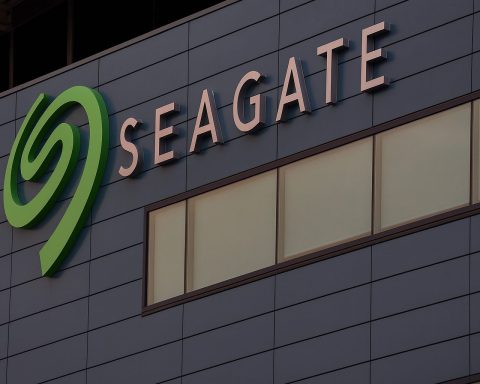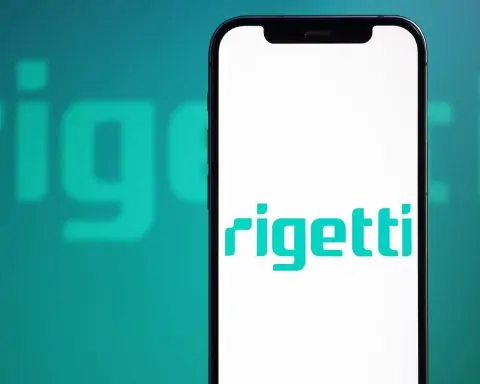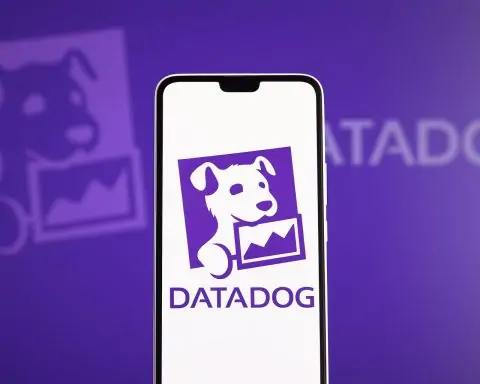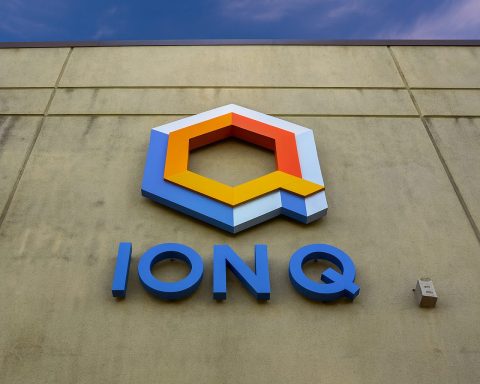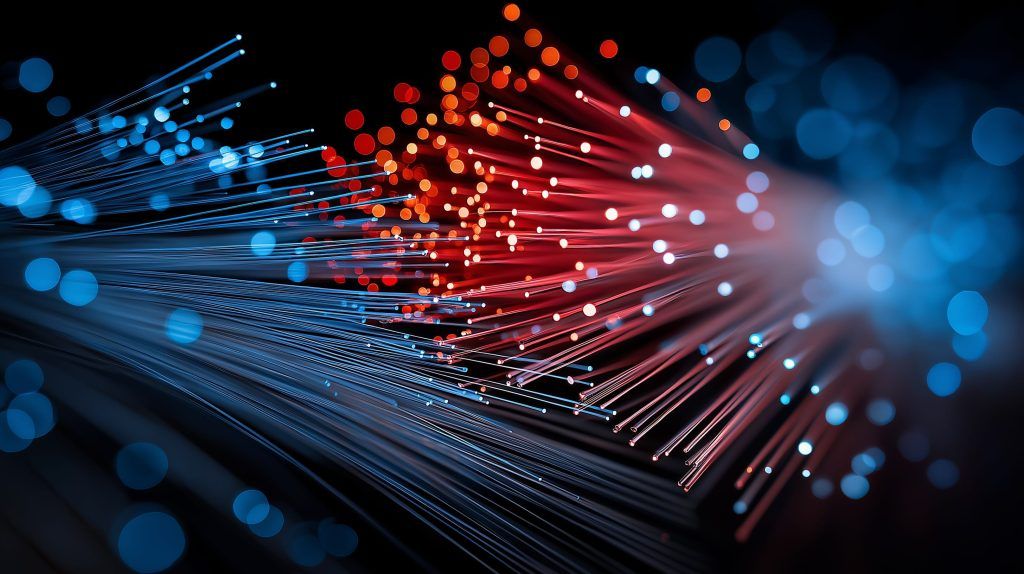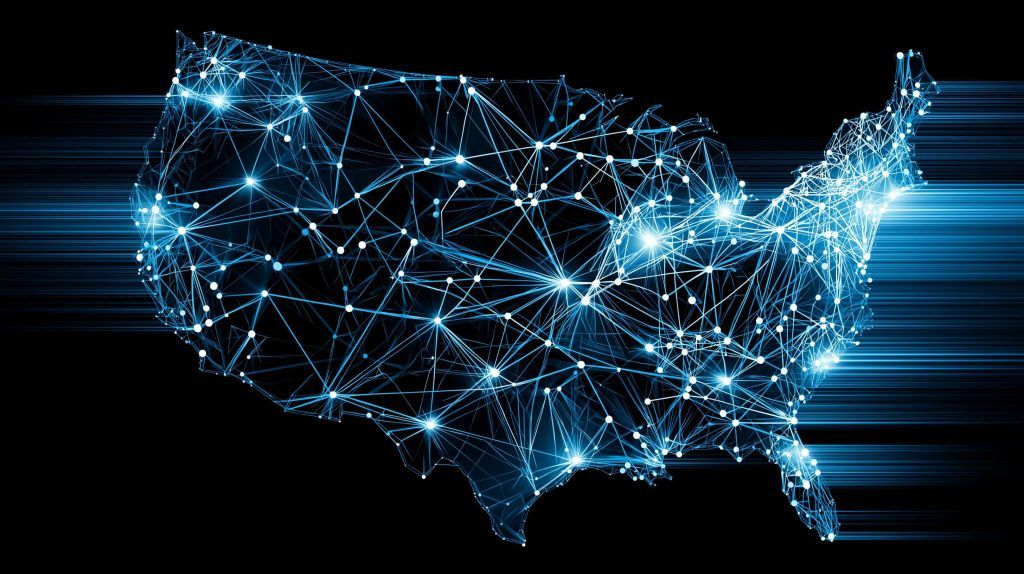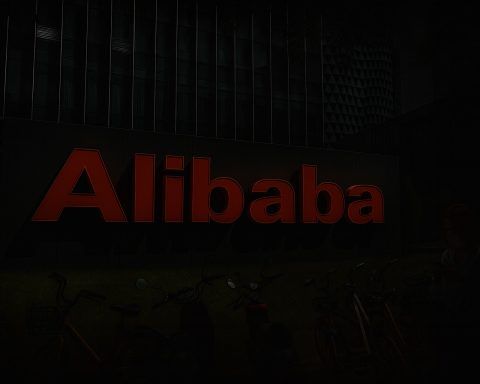- By 2024, whole-home mesh systems were expected to account for about 47.6% of all home router sales.
- Netgear’s Orbi 970 (late 2024) and Orbi 870 (early 2025) mesh systems use Wi‑Fi 7 tri‑/quad‑band designs to deliver 20–27 Gbps and support 150–200 devices.
- Wi‑Fi 7 (802.11be) can reach up to about 23 Gbps on a single band, uses 320 MHz channels and 4096-QAM, and employs Multi-Link Operation for simultaneous multi-band backhaul.
- In 2025, Deutsche Telekom’s T-Labs achieved entangled photon transmission over 30 km of fiber with 99% fidelity for 17 days and demonstrated 82 km total distance with 92% fidelity.
- In mid-2025, the EQUAL project launched to create erbium-based quantum light sources on silicon chips, enabling on-demand entangled photons and integration with quantum memories, funded at about €5.3 million over five years.
- In 2024, Qunnect unveiled Gotham, a turnkey rack system for testing a quantum-entangled network in New York City.
- Wi‑Fi 7’s top performance relies on the 6 GHz band, but 6 GHz signals have shorter range and wall penetration than 2.4/5 GHz, necessitating mesh or additional access points for large homes.
- The article envisions a future where mesh networks interface with quantum-secured uplinks, encrypting external traffic with keys delivered via quantum links and potentially using a quantum RNG in the home gateway.
- Gartner forecasts Wi‑Fi 7 will account for about 10% of new Wi‑Fi access point shipments in 2025, with IDC predicting about half of new enterprise Wi‑Fi gear by 2027.
- The first Wi‑Fi 7 routers and devices appeared in late 2022 and 2023, CES 2024 saw many Wi‑Fi 7 routers, and by the end of 2024 around 269 million Wi‑Fi 7 devices had shipped.
Introduction: A New Era of Home Connectivity
Home internet is on the brink of a major transformation. From eliminating Wi-Fi dead zones to delivering multi-gigabit speeds and even harnessing quantum physics for ultra-secure links, emerging technologies promise to redefine how we stay connected at home. Mesh networking systems, Wi-Fi 7, and quantum internet links are at the forefront of this revolution. These innovations are expanding coverage, boosting bandwidth, and introducing unprecedented security features – all to meet the exploding demands of modern households. This report dives into each technology, explaining how it works and where it’s headed, with the latest developments in 2024–2025, expert insights, and what they mean for consumers. The future of home internet is being written now, and it’s more exciting than ever.
Mesh Networks: Whole-Home Coverage Without Dead Zones
What It Is and How It Works: Mesh Wi-Fi networks use multiple routers or “nodes” spread across your home to create one seamless wireless network. Unlike a single traditional router (or clunky extender setups), mesh nodes cooperate to blanket your entire space in strong signal [1] [2]. The base node plugs into your modem, while satellite nodes wirelessly (or via ethernet backhaul) relay internet throughout the house. This “mesh” architecture means you can roam from the basement to the backyard without losing connectivity. Each node intelligently routes traffic to ensure devices connect to the best signal available. In short, a mesh system “creates a seamless blanket of coverage throughout your entire space,” vastly surpassing a single router in coverage and performance [3]. As Tom’s Guide puts it, mesh kits “can fill even the largest homes with a strong Wi-Fi signal,” banishing the infamous Wi-Fi dead zones for good [4].
Latest Developments (2024–2025): Mesh Wi-Fi has rapidly evolved from a high-end novelty to a mainstream solution. By 2024, whole-home mesh systems were expected to make up nearly half of all home router sales (≈47.6%), reflecting how popular this tech has become for consumers seeking reliable coverage [5]. Virtually every major networking brand now offers mesh packages, and internet service providers are bundling mesh extenders with their plans. Recent mesh products have also embraced the newest Wi-Fi standards. For example, in early 2025 Netgear launched the Orbi 870 Series, a mesh system powered by Wi-Fi 7 to deliver “uncompromising WiFi performance for large homes” with multi-gigabit speeds and advanced security built-in [6] [7]. This trend of Wi-Fi 6, 6E, and now Wi-Fi 7 support in mesh systems means users can future-proof their networks. Modern mesh routers often feature tri-band or even quad-band setups (e.g. dedicated 6 GHz backhaul radios), multi-gigabit ethernet ports, and AI-driven optimizations [8] [9]. Industry-wide standards like Wi-Fi Alliance’s EasyMesh ensure interoperability so that even different vendors’ nodes might work together in the future, making mesh networks more flexible. In short, 2024–2025 has seen mesh networking mature with faster radios and smarter software, bringing better performance and user-friendliness.
Consumer Benefits: The chief benefit of a mesh network is simple: no more weak signals or dead spots. If you’ve ever struggled with a flaky connection in an upstairs bedroom or the far corner of your home, mesh systems solve that by placing an access point nearby. The network automatically “self-heals” and reroutes if one node goes down, improving reliability. Mesh Wi-Fi also handles loads of devices better than a single router – useful as households now have dozens of connected gadgets (phones, smart TVs, IoT devices, etc.). Thanks to coordinated coverage across nodes, mesh networks maintain consistent speeds for many devices simultaneously [10] [11]. Advanced mesh systems come with user-friendly apps, guest network controls, and robust security features (some even offer enterprise-grade security and automatic updates to protect your home network) [12]. For large homes, multi-story buildings, or properties with outdoor smart devices, mesh is becoming the go-to solution to “eliminate dead zones and provide consistent coverage”everywhere [13].
Challenges and Considerations: Mesh networking isn’t without its challenges. The improved coverage comes at a higher cost – quality mesh router kits can be expensive, especially those with cutting-edge Wi-Fi 6E/7 radios (flagship tri-band Wi-Fi 7 mesh sets in 2025 cost well above $1000 for a 3-pack) [14]. Setting up multiple nodes is much simpler now than a few years ago, but optimal placement is key; thick walls or interference still require strategic node locations or wired backhauls for best results. Performance can also be limited by the backhaul link between nodes – cheaper mesh systems share the same wireless band for backhaul and devices, which can halve speeds. Newer models mitigate this with additional bands or Multi-Link Operation (MLO) (in Wi-Fi 7 meshes) that use multiple frequencies at once for backhaul [15]. Another consideration is that to fully benefit from a Wi-Fi 6E or Wi-Fi 7 mesh, your client devices (phones, laptops) also need compatible Wi-Fi radios; otherwise, you’re paying for capabilities you aren’t using. Finally, as with any wireless system, there’s a trade-off between coverage and speed – a distant mesh node yields great coverage but its speed will depend on signal quality to the base. Wired backhaul (connecting nodes via ethernet or powerline) can help maintain full speed at far nodes, and many mesh routers now include multi-gig ports to encourage this. Despite these caveats, mesh networking’s convenience and reliability gains have solidified its place. As one industry analysis noted, the surging demand for “seamless and reliable Wi-Fi connectivity” across all rooms and devices is a major driver behind mesh Wi-Fi’s growth [16] [17]. Mesh networks are here to stay, and likely soon to be a default component of home internet setups.
Wi-Fi 7: Next-Generation Wireless Speed and Capacity
What It Is: Wi-Fi 7 is the brand name for the latest IEEE wireless LAN standard, 802.11be, also known as Extremely High Throughput (EHT). It is the successor to Wi-Fi 6/6E, and it significantly boosts wireless speed, reduces latency, and improves reliability for devices. Whereas Wi-Fi 6 brought better efficiency, Wi-Fi 7 is about much higher bandwidth and smarter use of spectrum. In technical terms, Wi-Fi 7 can quadruple the maximum data rates of Wi-Fi 6 – delivering theoretical speeds up to about 23 Gbps on a single band [18] [19]. It achieves this with several advancements:
- 320 MHz Channels: Wi-Fi 7 doubles the channel width (up to 320 MHz in the 6 GHz band) versus 160 MHz in Wi-Fi 6, allowing it to carry more data per transmission [20].
- 4096-QAM Modulation: The new 4K-QAM mode packs more bits into each radio symbol (12 bits vs 10 bits in the previous 1024-QAM), increasing throughput ~20% at the cost of needing a very clean signal [21].
- Multi-Link Operation (MLO): Perhaps the most game-changing feature, MLO lets devices transmit and receive simultaneously over multiple bands/channels (2.4 GHz, 5 GHz, 6 GHz) [22]. In practice, this means a Wi-Fi 7 router can use, say, 5 GHz and 6 GHz links at once to a device or another node, aggregating bandwidth and reducing latency if one path is congested [23]. This is mandatory for Wi-Fi 7 certification, underscoring how central it is [24].
- Better OFDMA and Preamble Puncturing: Wi-Fi 7 refines the Wi-Fi 6 techniques that allow many devices to share spectrum efficiently. “Preamble puncturing” lets the router ignore small parts of a channel that have interference and still use the rest, instead of dropping the whole channel [25]. This makes connections more robust and reliable even in noisy environments [26].
- Up to 16 Spatial Streams: Doubling the 8 streams of Wi-Fi 6, though home routers might not use all 16, this can increase capacity in high-end deployments [27].
All these features mean Wi-Fi 7 is built for high-bandwidth, low-latency applications – think flawless 8K video streaming, AR/VR headsets that need instantaneous responsiveness, online gaming without lag, and handling dozens of smart devices at once [28] [29]. As Cisco’s tech guide notes, Wi-Fi 7 aims to enable next-gen experiences “like ultra-high definition streaming, AR/VR, industrial IoT, remote surgery” by providing the necessary throughput and reliability [30]. In short, Wi-Fi 7 is the cutting-edge of Wi-Fi, pushing wireless speeds into multi-gigabit territory and making home Wi-Fi a true rival to wired fiber in performance.
Latest Developments (2024–2025): The Wi-Fi 7 rollout kicked off in earnest in 2024. Standardization is nearly complete: the Wi-Fi Alliance opened its official Wi-Fi Certified 7 program in January 2024 to certify devices against the draft spec [31]. While the IEEE’s final 802.11be standard document was expected by late 2024 or early 2025 [32], practically all features were already set, allowing manufacturers to forge ahead with “draft Wi-Fi 7” products. Indeed, the first Wi-Fi 7 routers and devices appeared in late 2022 and 2023, even before the standard was finalized [33]. By 2024, a trickle of early adopters turned into a flood of announcements. At CES 2024, numerous networking vendors showcased Wi-Fi 7 routers. By the end of 2024, the Wi-Fi Alliance reported 269 million Wi-Fi 7 devices shipped (cumulative), including some big-name consumer electronics [34]. Notably, flagship smartphones jumped on board: the Samsung Galaxy S24 Ultra, Google Pixel 9, and Apple iPhone 16 (all launched in 2024) came with Wi-Fi 7 radios, making the new standard a headline feature in premium phones [35]. This was a remarkable uptick for a standard that wasn’t fully ratified yet, underscoring strong industry confidence.
In the home networking market, Wi-Fi 7 mesh systems and routers began hitting shelves through 2024. Early models (often pricey) from ASUS, TP-Link, Netgear and others targeted enthusiasts needing the bleeding edge. For example, Netgear’s Orbi 970 and 870 mesh (released in late 2024 and early 2025) use Wi-Fi 7 tri-band and even quad-band setups to deliver a staggering 20–27 Gbps of combined wireless throughput and support up to 150–200 devices on one network [36] [37]. These systems highlight Wi-Fi 7 features like 320 MHz 6 GHz backhaul and MLO to ensure multi-gig speeds even at range [38]. Similarly, traditional router makers released Wi-Fi 7 standalone routers geared for gamers and high-performance needs (for instance, Asus’s ROG series). On the PC side, laptop and motherboard chipsets supporting Wi-Fi 7 started emerging by 2024, and Intel and Qualcommhave both announced Wi-Fi 7 capable modules, anticipating broader adoption in 2025 laptops and IoT devices.
Industry experts predict 2025 will be the inflection point where Wi-Fi 7 moves from early adopter phase to more widespread use [39] [40]. Gartner forecasts that in 2025 Wi-Fi 7 will grow to ~10% of all new Wi-Fi access point shipments (up from only ~2% in 2024) [41] [42]. By 2027, about half of new enterprise Wi-Fi equipment is expected to be Wi-Fi 7, according to IDC projections [43]. The vice president of marketing at Wi-Fi Alliance, Maureen Gallagher, noted the “strong momentum” seen already and expects “Wi-Fi 7 will see rapid adoption across a broad ecosystem,” projecting 2.1 billion Wi-Fi 7 devices will ship by 2028 [44] [45]. The upshot for consumers: starting in 2024 and especially into 2025, Wi-Fi 7 will become increasingly common in new internet equipment. Early adopters with cutting-edge routers and phones are already enjoying its benefits, and as the tech trickles down to mid-range devices, many home networks will get a significant performance upgrade.
Benefits for Home Users: For everyday users, Wi-Fi 7’s advantages will be most noticeable in scenarios that push current Wi-Fi to its limits. Have a multi-gigabit fiber internet plan? A Wi-Fi 7 router can actually deliver those gigabit-plus speeds wirelessly to new laptops or phones (whereas older Wi-Fi 5/6 routers would bottleneck around a few hundred Mbps in real conditions). Love streaming 4K or 8K movies, or using cloud gaming services? Wi-Fi 7’s extra bandwidth and lower latency ensure smooth playback with no buffering, even if multiple family members stream concurrently. Smart home enthusiasts and heavy device households benefit too: Wi-Fi 7 can handle far more simultaneous devices thanks to improved multi-user scheduling and the huge capacity gain. It’s also tailored for emerging tech – think wireless VR headsets that demand both high throughput and stable low latency; Wi-Fi 7 is explicitly designed with these in mind, to the point that it could enable wire-quality VR experiences untethered [46]. Additionally, online gaming and video calls stand to improve. The reduced latency and jitter (thanks to MLO and other optimizations) mean more responsive gameplay and fewer Zoom glitches, even when the network is busy. In essence, Wi-Fi 7 brings the speed and reliability of wired connections into the wireless realm. Cisco experts note it offers “super low latency, more robust connection[s]… better interference mitigation, … and increased security” compared to its predecessors [47], which translates into a smoother, more dependable Wi-Fi experience for users.
Challenges and Adoption Considerations: Despite the hype, Wi-Fi 7 isn’t a magic bullet for all scenarios, and its adoption will be gradual. Consumers should be aware of a few challenges:
- New Hardware Required: To benefit from Wi-Fi 7, you’ll need a Wi-Fi 7 capable router and Wi-Fi 7 devices. Legacy devices (Wi-Fi 5/6) will work with a Wi-Fi 7 router but won’t get the new speeds or features. It will take time for the average household’s mix of phones, laptops, TVs, etc. to support the new standard. Early 2025’s penetration was mostly in high-end devices [48].
- 6 GHz Spectrum and Range: Wi-Fi 7’s top performance often relies on the 6 GHz band (especially for those 320 MHz ultra-wide channels). But 6 GHz signals have a shorter range and less wall penetration than 2.4/5 GHz. In practice, this means the blinding speeds of Wi-Fi 7 drop off faster with distance. Users in large homes may actually need mesh setups or strategically placed access points to consistently harness Wi-Fi 7 speeds – a single router might not cover far corners with 6 GHz. (The synergy of Wi-Fi 7 + mesh is already apparent; mesh nodes can bring that high-speed signal closer to each area of the home.)
- Environmental Interference: While Wi-Fi 7 has tools like preamble puncturing to handle interference, the use of ultra-wide channels means it gobbles up spectrum. In dense neighborhoods (especially when 6 GHz usage becomes common), overlapping networks could interfere if not managed, potentially reducing the real-world throughput gains. Efficiently using 320 MHz without stepping on neighbors may require dynamic coordination or falling back to narrower channels in congested areas.
- Cost: As with any new tech, Wi-Fi 7 routers currently command a premium. Early adopters are paying top dollar (often $300+ for high-end routers, and $1000+ for mesh kits) [49]. Over 2025–2026, prices will likely come down as more chipmakers produce Wi-Fi 7 radios and the tech scales, but budget-conscious consumers might wait until Wi-Fi 7 features trickle into mid-tier routers.
- Real vs Theoretical Speeds: Hitting the theoretical 20+ Gbps throughput is practically unrealistic in typical homes. Those numbers assume ideal conditions (multiple streams, no interference, close range). For example, the 4K-QAM mode is so demanding that a client “has to be very close to the Access Point, within a few feet” to get the benefit [50]. So while Wi-Fi 7 will greatly improve speeds, the top advertised numbers are more about bragging rights. Still, even a fraction of 20 Gbps is many gigabits – a huge leap from Wi-Fi 5 or 6.
- Compatibility and Standards: The Wi-Fi Alliance’s certification helps ensure devices from different brands work together, but as the standard finalizes, there might be minor firmware updates needed for early units that launched on the draft spec. Consumers should keep their router firmware updated to enjoy all the latest features and security improvements.
On balance, Wi-Fi 7 represents an exciting step forward. As Maureen Gallagher of Wi-Fi Alliance remarked, “Wi-Fi Certified 7 [introduced in 2024] represents the culmination of extensive collaboration and innovation… facilitating worldwide product interoperability and a robust, sophisticated device ecosystem.” [51] It builds on the foundation of Wi-Fi 6/6E and pushes wireless networking into territory once reserved for wired connections. Over the next couple of years, expect Wi-Fi 7 to transition from a luxury to a standard feature in new connectivity products, elevating what home internet can do.
Quantum Links: The Dawn of the Quantum Internet
What Are “Quantum Links”? In the context of home internet, quantum links refer to the emerging technology of the quantum internet – a network that uses the principles of quantum physics to connect devices and share data. Unlike today’s internet (which sends classical bits over fiber or radio waves), a quantum internet would transmit information in the form of quantum bits (qubits), often via particles of light (photons) that are in special states of quantum entanglement. The defining promise of quantum communication is unbreakable security and fundamentally new capabilities. Because of how quantum physics works, any attempt to eavesdrop on a quantum link disturbs the data and is immediately detected [52]. This could make communications ultra-secure, thwarting hacks that plague classical networks. Quantum links also enable phenomena like quantum teleportation of information and distribution of entangled states that can be used for new computing architectures. In practical terms, one of the first applications is Quantum Key Distribution (QKD) – using quantum links to share encryption keys that no hacker can intercept without alerting the parties [53]. But the vision goes further: experts say fully realized quantum networks will allow quantum computers in different locations to work together, synchronize clocks with unprecedented precision, and do things we can’t yet imagine. “A quantum internet would be as beneficially disruptive to the way we live our lives as the introduction of smartphones was,” explains Koji Azuma, a quantum physicist at NTT, highlighting possibilities like highly secure communications, quantum currency transactions, and cloud quantum computing on such networks [54].
How It Works (In Brief): Quantum links rely on the bizarre properties of entangled photons. In essence, you have to create pairs of photons (or other quantum particles) that share a quantum state, then send one of each pair down optical fiber (or through the air) to the two nodes you want to connect. Measurements on these entangled particles can be used to establish a shared quantum bit between the nodes. By stringing together entanglement across many nodes, you can form a rudimentary quantum network. However, sending entangled photons over long distances is hard – fiber optics cause photons to attenuate and you cannot use a traditional amplifier or repeater, because measuring or copying the photon breaks its quantum state [55]. This is why we need new devices called quantum repeaters that can extend the range by cleverly swapping or storing quantum states without “looking” at them. It’s a grand challenge in physics and engineering. Progress is being made: for instance, researchers are developing all-photonic quantum repeaters (which avoid the slower quantum memory approach) to keep signals uncorrupted over distance [56] [57]. Another approach uses quantum memory elements (like certain atoms or defects in crystal lattices) to temporarily hold qubits and help ferry them across hops. In short, building a quantum internet requires overcoming the no-cloning rule of quantum info and the fragility of qubits, which is why it’s still largely in labs and pilot projects today.
Latest Developments (2024–2025): While quantum networking is still experimental, the past two years have seen significant milestones bringing it closer to reality:
- Long-Distance Field Trials: In 2025, Deutsche Telekom’s T-Labs in Berlin reported a breakthrough in real-world quantum networking: they achieved entangled photon transmission over 30 km of standard optical fiber with 99% fidelity, sustained over 17 days [58] [59]. This experiment, presented at a major telecom conference, showed that quantum entanglement can be distributed stably over metropolitan distances, even while sharing the fiber with regular internet traffic. In fact, the team also demonstrated entangled photons traveling a total of 82 km through a network with simultaneous classical data flowing (using different wavelength bands), and still achieved over 92% fidelity [60]. These are record distances for entanglement distribution in a “real world” environment – a big step from tiny lab setups to something approaching deployable tech. “Our fiber optics are ready for the Quantum Internet, even today,” proclaimed Claudia Nemat, Deutsche Telekom’s head of Technology & Innovation, noting that this was the first time a major telecom provider had run entanglement experiments on its own infrastructure and that “customers will benefit from such leaps in innovation… for example, through highly secure communication.” [61] This quote underscores how seriously telcos are treating quantum networking: they envision integrating it for customer-facing security enhancements in the future.
- Quantum Hardware Advances: A critical piece of the puzzle is developing devices that can generate and manage quantum states efficiently. In mid-2025, a Danish-German team launched the EQUAL project to create new quantum light sources using the rare-earth element erbium on silicon chips [62] [63]. Erbium is special because it emits photons at the same wavelength used in conventional telecom fiber (around 1550 nm), which means these single-photons can travel long distances in existing fiber networks. The project’s goal is to produce on-demand entangled photons and integrate them with quantum memories – something that “seemed unrealistic just a few years ago, but now we see a path forward,” says Prof. Søren Stobbe of DTU [64]. This five-year effort (funded ~€5.3M) is emblematic of many such initiatives worldwide: governments and research consortia are pouring funds into quantum repeaters, memories, and sources. In 2024, U.S. and EU programs likewise have been advancing testbeds linking multiple quantum nodes in city-wide networks (for example, researchers in China achieved a multi-node quantum network with memory-to-memory entanglement across a metropolitan area, showing the feasibility of scaling beyond point-to-point links).
- Standardization & Collaboration: While not a “standard” like Wi-Fi yet, the quantum networking community has been organizing roadmaps and test networks. The International Telecommunication Union (ITU) has begun discussing frameworks for quantum network interoperability, and bodies like the Quantum Internet Alliance (QIA) in Europe and DOE Quantum Network projects in the U.S. are defining protocols. 2025 was even declared the International Year of Quantum Science and Technology, reflecting the high-level support for quantum tech development [65]. We are seeing early “quantum network service” providers emerge too – for instance, Qunnect (the startup partnering with Deutsche Telekom) in 2024 unveiled a turnkey rack system called Gotham that lets partners play with a quantum-entangled network in New York City [66]. All these efforts suggest a coordinated push to move from laboratory experiments to working prototypes of a quantum internet.
Use Cases and Benefits: The most immediate benefit of quantum links is security. QKD is already used in some niche finance and government settings (e.g. Swiss banks have used quantum-encrypted fiber links for secure communication). As quantum links become more practical, they could protect everyday activities – imagine your home router exchanging secret keys with your ISP over a quantum link, making your connection effectively immune to eavesdropping. Any hacking attempt would be detected due to the nature of quantum states [67]. Beyond security, quantum networks would enable connecting quantum computers themselves. This might matter to consumers indirectly: cloud providers could link quantum processors in different data centers via quantum networks to create a more powerful distributed quantum computing service, solving complex problems faster. For tech enthusiasts, a quantum internet could also support new types of applications like quantum sensor networks (which could do ultra-precise measurements of time and gravity across the network) or even enable forms of quantum cloud storage where information is stored in entangled states across nodes. These are far-out ideas, but researchers emphasize they could be transformative. Hiroki Takesue of NTT notes the field is “growing rapidly” and small-scale quantum networks may become reality within a decade [68] [69]. In practical terms, the general public might first experience quantum networking as an added security layer for critical transactions (banking, voting, personal data backups) and as an assurance that even quantum computers (which in the future could crack today’s encryption) won’t be able to breach your privacy – because your data traveled via quantum-encrypted channels.
Challenges to Overcome: The quantum internet is in its infancy, and significant hurdles remain before it reaches homes:
- Fragility of Quantum Signals: As mentioned, qubits don’t last long over distance. Maintaining entanglement or coherence over hundreds of kilometers likely requires quantum repeaters placed periodically, which themselves are complex devices still under development [70]. Currently, most demonstrations are either on relatively short fibers (tens of kilometers) or using specialized fiber with low loss, or they incur high signal loss that isn’t feasible for real application yet. Free-space quantum links via satellite (like China’s Micius satellite that demonstrated space-to-ground QKD) can cover long distances by going above the atmosphere, but then you need line-of-sight or satellite infrastructure.
- Hardware and Integration: Quantum devices (single-photon sources, detectors, quantum memories) often operate at extreme conditions – some need cryogenic cooling, others use exotic materials. Integrating them with today’s telecom network gear is non-trivial. The good news is projects like the one using erbium aim to piggyback on existing fiber optic infrastructure [71], and companies like Qunnect are making “drop-in” hardware that telecom operators can test [72]. Still, it’s a long road to go from a prototype in a lab to a rugged device in every home or neighborhood.
- Standardization and Compatibility: There’s no universal quantum network protocol yet analogous to TCP/IP. Different groups are experimenting with different approaches (some use entanglement swapping, some use QKD with trusted nodes, etc.). Eventually, standards will need to ensure quantum nodes can talk to each other regardless of who built them. Efforts by international research alliances are underway, but convergence will take time.
- Usefulness vs. Cost: For a homeowner, it’s not clear when having a “quantum link” will be worth the cost. Classical encryption (if quantum-resistant algorithms are used) might suffice for most privacy needs in the near term. Quantum networks might first thrive in government, research, and enterprise settings where the extra security or capability justifies the expense. Widespread consumer adoption could be a decade or more out – perhaps when quantum computing becomes mainstream and we all need protection against it, or if some “quantum service” emerges that millions want to use. Koji Azuma and colleagues anticipate small quantum networks in ~10 years and larger-scale ones after that [73]. So, while mesh Wi-Fi and Wi-Fi 7 are happening now, quantum internet is a longer horizon.
Nonetheless, the impact on the broader internet could be profound. We might see a hybrid scenario in the 2030s: classical networks for bulk data transfer and quantum networks layered on top for securing critical data exchanges and linking quantum computers. As one CEO working on this tech remarked, demonstrations like the 2025 Berlin trial are “critical for showing progress towards the commercial utility of quantum networking” [74]. In other words, the pieces are starting to come together. For the general public, the quantum internet is mostly about future-proofing security. Even if you’re not directly sending qubits from your laptop, your financial transactions, health records, and personal communications may eventually ride on quantum-secured channels established between your ISP and various services. That means peace of mind that your data is safe from even the most advanced threats.
Convergence and Synergy: The Future Home Internet Ecosystem
Each of these three technologies – mesh networking, Wi-Fi 7, and quantum communication – addresses different aspects of the home internet experience: coverage, capacity, and security. They are not competing so much as complementary, and together they paint a picture of the home network of the future.
- Mesh + Wi-Fi 7 (Seamless Gigabit Everywhere): Mesh networking and Wi-Fi 7 are a match made in heaven for high-performance home coverage. One downside of Wi-Fi 7’s ultra-fast 6 GHz signals is their range, which diminishes more quickly with distance. Mesh solves this by placing nodes closer to devices. In fact, to truly enjoy Wi-Fi 7’s gigabit-plus speeds in every corner, you’ll likely deploy a mesh of Wi-Fi 7 nodes – effectively bringing the network’s top capabilities within a few rooms of every user. Using Wi-Fi 7 in a mesh also improves the mesh itself: features like Multi-Link Operation can create more robust wireless backbones between nodes [75]. For example, a Wi-Fi 7 mesh router might use both 5 GHz and 6 GHz simultaneously to double the bandwidth for the inter-node backhaul, ensuring that even the satellite units far from your modem have full speed. This means no more trade-off between range and speed – you get both. We’re already seeing this synergy: Netgear’s latest Orbi Wi-Fi 7 meshes explicitly use MLO to combine bands for better backhaul and low latency [76]. As Wi-Fi 7 becomes common, mesh systems will be the norm to distribute those multi-gigabit speeds across large homes, with “front door to back yard” coverage even at 10+ Gbps levels [77] [78]. In short, Wi-Fi 7 turbocharges mesh networks, and mesh networking allows Wi-Fi 7 to shine. For consumers, this duo means a future of truly uniform, ultra-fast wireless connectivity – no matter if you’re next to the router or two floors away. Activities like 4K streaming or VR gaming won’t be confined to the living room; the backyard, garage, or attic can be high-bandwidth zones too.
- Mesh + Quantum (Secure, Resilient Networks): While mesh is about local coverage and quantum is about long-distance secure links, there is a vision where they intersect. Imagine your home mesh network not only optimizes Wi-Fi coverage but also interfaces with a quantum-secured line out to the internet. The mesh could ensure every device in your home communicates to the router with strong Wi-Fi, and then for any external traffic that needs high security (say, when you’re accessing your bank or cloud drive), the router uses keys delivered via quantum link to encrypt that traffic. In essence, the mesh keeps your local connectivity fast and flawless, while the quantum technologies keep your upstream connectivity ultra-secure. Another angle is resilience: mesh networks are already self-healing (they reroute if one node fails); future networks might also use quantum-derived randomness or encryption to be more resilient against cyber attacks. It’s conceivable that a quantum random number generator (such as ones being developed from quantum photonics [79] [80]) could live in your home gateway to constantly bolster encryption for your mesh traffic internally. These are speculative synergies, but they underline that mesh and quantum tech aren’t mutually exclusive – one operates at the home scale, the other at the global/inter-provider scale. Together they could provide both convenience and security, ensuring every link in the chain from your smart fridge to the cloud is optimized.
- Wi-Fi 7 + Quantum (Speed Meets Security): Wi-Fi 7 and quantum links target different facets – one maximizes throughput and low latency over relatively short ranges; the other guarantees security (and enables new computational possibilities) over long distances. In the future internet, they might work in tandem. For example, if telemedicine in 2030 involves a remote surgeon controlling robotic tools in your home, you’d want Wi-Fi 7 (or Wi-Fi 8 by then) handling the high-bandwidth, low-latency video and control signals within the home, while a quantum-secured link ensures the control signals from the hospital to your house cannot be intercepted or tampered with. Or consider cloud gaming/VR: Wi-Fi 7 beams the 8K XR stream to your headset without a hitch, while quantum-secured channels make sure your interactions and data streams with the cloud server remain private and tamper-proof. Even though quantum communications likely won’t replace Wi-Fi for last-hop connectivity (optical quantum signals don’t penetrate walls or travel through the air as flexibly as Wi-Fi radio waves), they can be the guardian of the data once it leaves the wireless LAN. Another synergy is in network timing: quantum links can synchronize clocks at different nodes to extreme precision (by sharing atomic clock states). This could enhance Wi-Fi networks too, as precise timing can improve how data is scheduled and reduce interference. Some of the advanced features in Wi-Fi standards (like Time-Sensitive Networking support) could benefit from such precision [81], potentially provided by quantum clock sync over the wider network [82]. Ultimately, Wi-Fi 7 makes your local network blazing-fast, and quantum tech makes the broader network ultra-secure and intelligent – both are key ingredients for a next-gen internet that is up to the demands of a hyper-connected world.
Conclusion: A Connected Future on the Horizon
The future of home internet is bright – and it’s rapidly taking shape through the convergence of these technologies. In the coming years, an ordinary day online might look like this: You’ll have a mesh Wi-Fi 7 system quietly working in the background, ensuring every room in your house has fiber-like wireless speeds. You won’t think about it – connectivity will just be everywhere, fast and reliable. You’ll download movies or game updates in seconds and enjoy buffer-free 8K streams on any screen in the house. Your smart appliances, sensors, and VR/AR devices will all stay seamlessly connected at once, no juggling required. Meanwhile, when you’re sending sensitive data or accessing cloud services, behind the scenes a quantum-secured link will protect those transactions. Perhaps your router negotiates encryption keys via quantum signals with your bank’s server, giving you a level of privacy and security unparalleled in previous eras. All of this will happen largely transparently, as part of the service offerings from ISPs and router manufacturers who integrate these breakthroughs.
There will, of course, be a transition period. Mesh networking is already here and is only getting better with each generation of Wi-Fi. Wi-Fi 7 is arriving now, with 2025 poised to be a big year for seeing it in more homes – early adopters are leading the way, but broader adoption will follow as new devices include the tech by default. Quantum links, on the other hand, will take longer to trickle down. The 2024–2025 breakthroughs are akin to the early 1990s in classical internet: fundamental but mostly happening in labs and advanced industry testbeds. However, the pace of advancement is high, and government and industry investment is pouring in. We might start seeing the first commercial quantum-secured network services by the late 2020s for businesses and governments, and mainstream consumer use in the 2030s. Researchers are optimistic that “small-scale quantum networks will become a reality within a decade” [83].
For a general audience, the takeaway is that significant improvements are coming to your home internet experience. The Wi-Fi coverage and speed issues that used to frustrate us are being solved by mesh systems and new standards like Wi-Fi 7. At the same time, looming future threats (like hackers armed with quantum computers) are being preempted by the development of quantum-secure communication. The market implications are vast: expect a wave of new routers and gadgets advertising these capabilities, and new service tiers from ISPs (imagine “Wi-Fi 7 Guaranteed Coverage” plans or “Quantum Secure Internet” options as selling points). It’s an exciting time where the once esoteric (quantum physics! multi-gigabit radio!) is becoming practical and relevant to our daily lives.
In summary, the home internet of tomorrow will be faster, more pervasive, and more secure than ever before. Mesh networking extends the reach, Wi-Fi 7 breaks the speed limits, and quantum links fortify the security foundations. Each builds on years of innovation and each had significant developments in 2024–2025 that moved the needle. Together, they are shaping an internet that can keep up with our growing digital lives. The revolution is already underway – soon, buffering videos, dead Wi-Fi zones, and data breaches may well be relics of a past era as our homes step into this new age of connectivity.
Sources:
- HP Tech Takes – “What is a Mesh WiFi Router? A Complete Guide for 2025”, HP® Tech Blog [84] [85].
- Tom’s Guide – “Best mesh Wi-Fi systems of 2025: say goodbye to Wi-Fi dead zones for good” [86].
- WiseGuy Research – Mesh Wifi Router Market: Future Outlook and Trends 2035 (market share and growth data) [87] [88].
- Netgear Press Release – “NETGEAR Expands WiFi 7 Portfolio with Orbi 870 Series Mesh System”, Jan 7, 2025 [89] [90].
- Network World – “Wi-Fi 7 in 2025: Will this be the year?” (quotes from Wi-Fi Alliance and adoption stats) [91] [92].
- Cisco Meraki – “Wi-Fi 7 (802.11be) Technical Guide” (overview of Wi-Fi 7 features and use cases) [93] [94].
- Wikipedia – “Wi-Fi 7” (IEEE 802.11be development timeline and features) [95] [96].
- Deutsche Telekom News – “Breakthrough for the quantum internet – from the lab to the real world”, Apr 15, 2025 (entanglement over 30 km fiber trial) [97] [98].
- ScienceDaily – “Scientists just took a big step toward the quantum internet”, June 12, 2025 (quantum light source integration project) [99] [100].
- Nature/NTT (via partnerships.nature.com) – “Quantum leaps promise to reshape the internet”, 2025 (expert commentary on quantum internet potential) [101] [102].
References
1. www.hp.com, 2. www.tomsguide.com, 3. www.hp.com, 4. www.tomsguide.com, 5. www.wiseguyreports.com, 6. investor.netgear.com, 7. investor.netgear.com, 8. www.hp.com, 9. www.hp.com, 10. www.hp.com, 11. www.hp.com, 12. www.hp.com, 13. www.wiseguyreports.com, 14. investor.netgear.com, 15. investor.netgear.com, 16. www.wiseguyreports.com, 17. www.wiseguyreports.com, 18. en.wikipedia.org, 19. documentation.meraki.com, 20. investor.netgear.com, 21. documentation.meraki.com, 22. en.wikipedia.org, 23. investor.netgear.com, 24. en.wikipedia.org, 25. en.wikipedia.org, 26. documentation.meraki.com, 27. en.wikipedia.org, 28. documentation.meraki.com, 29. documentation.meraki.com, 30. documentation.meraki.com, 31. en.wikipedia.org, 32. en.wikipedia.org, 33. en.wikipedia.org, 34. www.networkworld.com, 35. www.networkworld.com, 36. investor.netgear.com, 37. investor.netgear.com, 38. investor.netgear.com, 39. www.networkworld.com, 40. www.networkworld.com, 41. www.networkworld.com, 42. www.networkworld.com, 43. www.networkworld.com, 44. www.networkworld.com, 45. www.networkworld.com, 46. documentation.meraki.com, 47. documentation.meraki.com, 48. www.networkworld.com, 49. investor.netgear.com, 50. documentation.meraki.com, 51. www.networkworld.com, 52. www.telekom.com, 53. www.telekom.com, 54. www.nature.com, 55. www.nature.com, 56. www.nature.com, 57. www.nature.com, 58. www.telekom.com, 59. www.telekom.com, 60. www.telekom.com, 61. www.telekom.com, 62. www.sciencedaily.com, 63. www.sciencedaily.com, 64. www.sciencedaily.com, 65. www.ornl.gov, 66. www.telekom.com, 67. www.telekom.com, 68. www.nature.com, 69. www.nature.com, 70. www.nature.com, 71. www.sciencedaily.com, 72. www.telekom.com, 73. www.nature.com, 74. www.telekom.com, 75. investor.netgear.com, 76. investor.netgear.com, 77. investor.netgear.com, 78. investor.netgear.com, 79. www.ornl.gov, 80. www.ornl.gov, 81. en.wikipedia.org, 82. www.nature.com, 83. www.nature.com, 84. www.hp.com, 85. www.hp.com, 86. www.tomsguide.com, 87. www.wiseguyreports.com, 88. www.wiseguyreports.com, 89. investor.netgear.com, 90. investor.netgear.com, 91. www.networkworld.com, 92. www.networkworld.com, 93. documentation.meraki.com, 94. documentation.meraki.com, 95. en.wikipedia.org, 96. en.wikipedia.org, 97. www.telekom.com, 98. www.telekom.com, 99. www.sciencedaily.com, 100. www.sciencedaily.com, 101. www.nature.com, 102. www.nature.com


